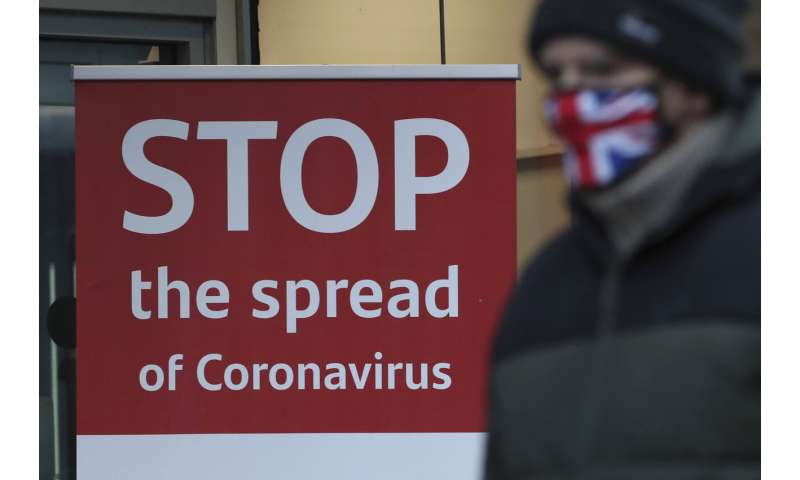
In recent days, the British have said they will stretch out the interval between the administration of the two doses required for Covid-19 vaccines already in use — potentially to as long as three months, instead of the recommended three or four weeks. And they have said they will permit the first dose and second dose for any one person to be from different vaccine manufacturers, if the matching vaccine is not available.
The moves are borne of a desire to begin vaccinating as many people as quickly as possible, particularly with Britain facing high levels of transmission of an apparently more infectious form of SARS-CoV-2, the virus that causes Covid-19.
But they are also effectively turning that country into a living laboratory. The moves are based on small slices of evidence mined from “subsets of subsets” of participants in clinical trials, as one expert described it for STAT, and on general principles of vaccinology rather than on actual research into the specific vaccines being used. If the efforts succeed, the world will have learned a great deal. If they fail, the world will also have gained important information, though some fear it could come at a high cost.
American health officials have dismissed the possibility that the U.S. would follow Britain’s lead, with Anthony Fauci, director of the National Institute of Allergy and Infectious Diseases, saying the vaccines in use — one made by Moderna, the other by the Pfizer and BioNTech partnership — will be deployed here using the schedules that were tested in Phase 3 trials that generated the evidence on which the Food and Drug Administration authorized the vaccines for emergency use.
While data from both suggest the vaccines start to protect about 10 or 12 days after the first dose, it’s not known how long that initial protection lasts. In clinical trials, levels of neutralizing antibodies, which are thought to play a critical role in protecting against infection, were not substantial after the first dose of vaccine for the Pfizer vaccine.
“While we think that single shot could give protection for more than four weeks, we just don’t know that. We don’t know when it’s going to drop off,” said John Mascola, director of NIAID’s Vaccine Research Center. Mascola said Operation Warp Speed, the federal government’s project to fast-track Covid vaccines, ruled out the possibility of altering vaccination schedules before Britain decided to do so.
Paul Bieniasz of Rockefeller University is one of those who is watching the evolving situation in Britain with dread. A retrovirologist who turned from HIV research to work on SARS-2, Bieniasz is studying how the virus acquires mutations that allow it to evade the protective antibodies people develop when they have contracted Covid-19, or when they have been vaccinated against it.
Bieniasz believes Britain is replicating in people the experiments he’s been doing in his lab — and could be fostering vaccine-resistant forms of the virus.
On New Year’s Day he posted a short, sarcastic treatise — “Musings of an anonymous, pissed off virologist”— on Twitter outlining how one could go about rendering Covid vaccines “impotent,” if that was one’s goal. Giving millions of people who are at daily risk of contracting the disease incomplete protection by delaying the second dose of vaccine was key, he suggested.
“My concern, as a virologist, is that if you wanted to make a vaccine-resistant strain, what you would do is to build a cohort of partially immunized individuals in the teeth of a highly prevalent viral infection,” Bieniasz told STAT. Even rolling out the vaccine at all when there is so much transmission occurring is far from ideal, he said, suggesting it would have been safer to beat down the amount of virus in circulation before beginning the vaccine deployment.
“You are essentially maximizing the opportunity for the virus to learn about the human immune system. Learn about antibodies. Learn how to evade them,” he said.
Isabella Eckerle, a coronavirus researcher at the Geneva Center for Emerging Viral Diseases, shares Bieniasz’s concern that Britain is increasing the potential for so-called escape mutants. She understands the public health imperative behind its approach, but worries about having large numbers of partially protected people for several months at a stretch. Britain is vaccinating its oldest citizens first. The immune systems of the elderly don’t function as well as those of younger adults; some will inevitably contract Covid while waiting for their second dose of vaccine, she said.
Reports of partially vaccinated people contracting Covid may also erode confidence in the vaccines, Eckerle said: “If we fail to use this vaccine in a good way, it will damage the whole field of vaccinology for many, many years, I think.”
Stephen Goldstein, a virologist at the University of Utah who specializes in coronaviruses, said that taking Britain’s approach at a time of limited supply of vaccine could create other problems.
“If we vaccinate everybody with one dose and … six weeks later, the efficacy is now like 30% and we don’t have the doses to boost them at that point because we’ve used up their second doses on another round of first doses, it’s a disaster potentially,” he said.
Not everyone agrees there is a disaster in the making. Some believe it makes sense, given Britain’s surge in cases and the rapid spread there of the B.1.1.7 variant, which studies suggest may be 50% more transmissible than the viruses it is quickly replacing.
“At the core of my being, I really wish that we could adhere to the original schedule of vaccines, because that’s the safest thing to do,” said Akiko Iwasaki, a virologist and immunologist at Yale University who tweeted about her support for the British approach. “But seeing what’s happening in the world and just sort of looking at the situation of poor rollout and distribution, I’m feeling frustrated that we need to come up with some other options.”





